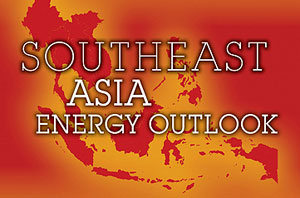 As fast-growing energy use in Southeast Asia leads to a sharp rise in the region’s dependence on oil imports and a reduction in its surplus of natural gas and coal for export, the International Energy Agency (IEA) has urged countries in the region to take serious action to improve energy efficiency.
As fast-growing energy use in Southeast Asia leads to a sharp rise in the region’s dependence on oil imports and a reduction in its surplus of natural gas and coal for export, the International Energy Agency (IEA) has urged countries in the region to take serious action to improve energy efficiency.
“Southeast Asia is, along with China and India, shifting the center of gravity of the global energy system to Asia,” IEA Executive Director Maria van der Hoeven said at the launch of a World Energy Outlook Special Report, Southeast Asia Energy Outlook, which provides a comprehensive picture of the region’s energy future. Joining Ms. Van der Hoeven at the launch in Bangkok were Thai Minister of Energy H.E. Pongsak Ruktapongpisal and Hidetoshi Nishimura, Executive Director of the Economic Research Institute for ASEAN and East Asia.
The report projects Southeast Asia’s energy demand to increase by more than 80% in the period to 2035, a rise equivalent to current demand in Japan. Currently the region’s per-capita energy use is still very low, in part because 134 million people, or over one-fifth of the population, lack access to electricity.
Increasing reliance on oil imports will impose high costs on Southeast Asian economies and leave them more vulnerable to potential disruptions. The report projects that by 2035, the region’s oil imports will rise to just over 5 million barrels per day, making it the world’s fourth-largest oil importer after China, India and the European Union and doubling its dependency (to 75% of demand). Southeast Asia’s annual spending on oil imports is seen rising to $240 billion in 2035, equivalent to almost 4% of its GDP. Thailand’s and Indonesia’s oil import bills are projected to be the highest in the region, tripling to nearly $70 billion each in 2035.
According to the report, Southeast Asia will see a reduction in the surplus of natural gas and coal for export, as production is increasingly diverted to domestic markets. Its net gas exports are cut by more than three-quarters to 14 billion cubic meters in 2035. The region’s net coal exports also decline after 2020 as regional demand surges and demand in the wider Asia-Pacific market slackens. Indonesia’s coal production rises by almost 90% as it remains, by a very large margin, the world’s top exporter of steam coal.
The WEO Special Report highlights that the power sector is fundamental to the energy outlook for Southeast Asia, and that within it, coal is emerging as the fuel of choice because of its relative abundance and affordability in the region. Electricity generation is projected to increase by more than the current power output of India, with coal accounting for almost 60% of the growth. “The rising share of coal in power generation underscores the urgent need to deploy more efficient coal-fired power plants,” Ms. Van der Hoeven said. Currently the average efficiency of these facilities is very low, at just 34%, owing to the almost exclusive use of subcritical technologies.
Developing policies to attract investment is vital for enhancing energy security, affordability and sustainability in Southeast Asia. Around $1.7 trillion of investment in energy-supply infrastructure is required in the period to 2035. The report notes underdeveloped energy transport networks, the need for greater stability and consistency in the application of energy-related policies and subsidized energy prices as key challenges that must be overcome to mobilize this level of investment. The IEA noted the detrimental effects that fossil fuel subsidies have on energy markets, finding that in Southeast Asia they amounted to $51 billion in 2012.
The report includes an Efficient ASEAN Scenario that highlights the gains possible in Southeast Asia simply by adopting energy efficiency measures that make economic sense. Doing so would cut projected energy demand by almost 15% in 2035, an amount that exceeds Thailand’s current energy demand. Net oil imports would fall by around 700 kb/d, comparable with Malaysia’s current production. And regional GDP would rise by about 2% in 2035, as reduced spending on energy increases disposable income and stimulates economic activity.
To download the Southeast Asia Energy Outlook, please click here.
To see the slides presented at the report’s launch, please click here
.


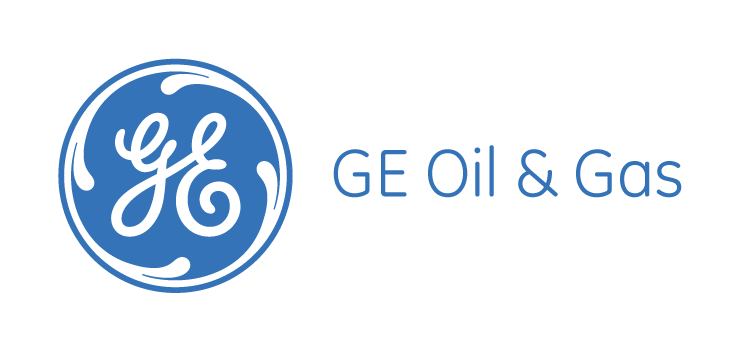 (NYSE: GE) has introduced innovative flexible pipes to help customers overcome these challenges by developing new materials for the pipes required to bring hydrocarbons to the surface.
(NYSE: GE) has introduced innovative flexible pipes to help customers overcome these challenges by developing new materials for the pipes required to bring hydrocarbons to the surface. As the economic fallout from the recent terrorist attack on Kenya's Westgate Mall by Somali militants is still unfolding, the country's petroleum industry will have to focus its attention toward security in order to keep its momentum, says an analyst with research and consulting firm
As the economic fallout from the recent terrorist attack on Kenya's Westgate Mall by Somali militants is still unfolding, the country's petroleum industry will have to focus its attention toward security in order to keep its momentum, says an analyst with research and consulting firm 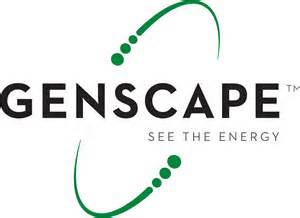 Construction of the Keystone Gulf Coast Pipeline (KGCP) has advanced considerably, according to Genscape’s most recent flyovers on September 29th
Construction of the Keystone Gulf Coast Pipeline (KGCP) has advanced considerably, according to Genscape’s most recent flyovers on September 29th 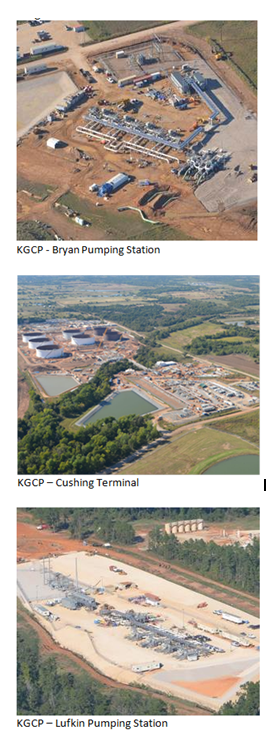 and October 6th. Genscape uses proprietary monitoring technology and aerial photography to monitor market moving pipeline flow disruptions and infrastructure projects to offer market participants a real-time look at the factors driving the U.S. and Canadian oil markets.
and October 6th. Genscape uses proprietary monitoring technology and aerial photography to monitor market moving pipeline flow disruptions and infrastructure projects to offer market participants a real-time look at the factors driving the U.S. and Canadian oil markets. Noble Energy, Inc.
Noble Energy, Inc. Petrobras,
Petrobras,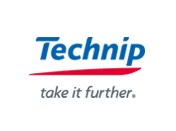 Technip
Technip  TransMontaigne Partners L.P.
TransMontaigne Partners L.P.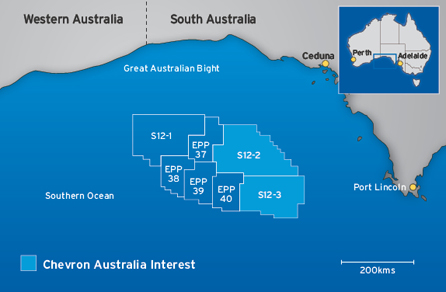
 Baker Hughes
Baker Hughes OPEC output dropped sharply in September, but non-OPEC supply growth is expected to approach record high in 2014
OPEC output dropped sharply in September, but non-OPEC supply growth is expected to approach record high in 2014
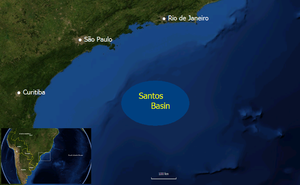
 A consortium of companies, including
A consortium of companies, including 

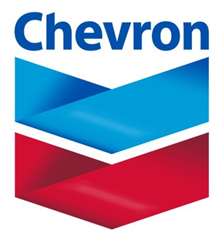 Chevron Corporation
Chevron Corporation